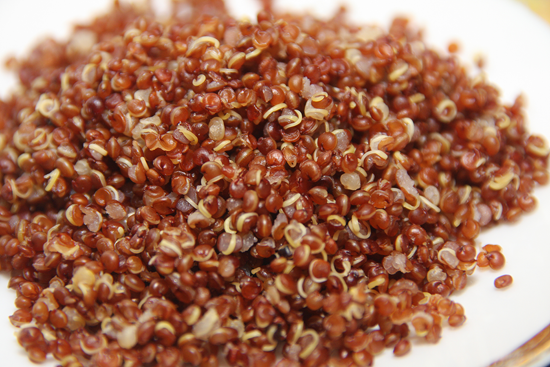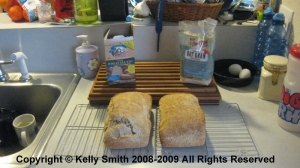Health Benefits of Quinoa
Vegans, Runners, Weight Trainers, and Others Love this Supergrain
© 2013 Kelly Smith; all Rights Reserved; Posted December 28, 2013


Runners, and other athletes for that matter, require additional protein in their diet compared to their sedentary counterparts. Protein is essential in repairing the muscles which break down when working out.
To compound this problem, many people have adopted vegan or vegetarian diets. This makes it very difficult to include a full range of proteins or amino acids on a daily basis.
Eat Quinoa for Protein
One of the easiest (and tastiest) methods to add essential amino acids into your diet is to consume organic quinoa. This supergrain (pronounced keen-wa) is becoming widely recognized as a “super food” by athletes, foodies, and others.
Quinoa (Chenopodium quinoa, or goosefoot) is in fact not really a true cereal grain, but a “pseudo-cereal”; it is a food that is cooked and eaten like grains and has a similar nutrient profile. But from a botanical point of view, quinoa is closer to beets, chard, and spinach, and in fact the leaves can be eaten as well as the grains.
This is an easy to cook food that can be eaten alone or in many dishes. It has been traditionally grown in the Andes mountains in South America. For quite a while in the past production wavered as the invading Spanish conquistadors compelled the indigenous Inca Indians to grow potatoes instead.
Let’s consider its nutritional value. Although there are several varieties, they average an impressive 16.2 percent protein. As a comparison, rice averages only 7.5. It also contains an impressive amount of Lysine (398mg), folate (19% RDA), thiamine (13%), mManganese (58%) and vitamin B6 (11%).Slow Burning on the Glycemic Index
Additionally, it ranks 35 on the glycemic index. Compare that with basmati white rice at 58. A lower ranking means slower-burning making it a natural choice to fuel endurance sports, like distance running.
Why is Lysine Important for Active People?
The University of Maryland Medical Center says, “Lysine is important for proper growth, and it plays an essential role in the production of carnitine, a nutrient responsible for converting fatty acids into energy. It also helps the body absorb and conserve calcium, and it plays an important role in the formation of collagen, a substance important for bones and connective tissues including skin, tendon, and cartilage.”
How to Cook Quinoa
This grain is easy to cook; most varieties only take 10 to 20 minutes to cook. Just combine a 2 to 1 water/quinoa ratio.
- First ring the water to a boil.
- Add the quinoa.
- Reduce the heat to a simmer.
- Eat it by itself or add it to a salad.

 It is also very adaptable to baking. For example, as an ingredient when baking bread (see the link to the recipe in the link section below).
It is also very adaptable to baking. For example, as an ingredient when baking bread (see the link to the recipe in the link section below).
Because of its cumulative advantages, quinoa is under consideration as a strong candidate for a crop in NASA’s Controlled Ecological Life Support System for long-duration human occupied spaceflights. Quinoa has also been designated a “super crop” by the United Nations because of its potential to feed the hungry hungry masses of the world
More Recipes and Food Articles
- Homemade Quinoa Whole Wheat Bread Recipe
- Organic Apple Sauce Recipe
- Build a Raised Bed Vegetable Garden
- Should You Steer Clear of Genetically Modified Food?
- Understanding Nutrition Labels and Serving Size
Website © 2010 KSmith Media, LLC; all rights reserved; content may not be copied, rewritten, or republished without written permission; Webmaster’s Google profile
